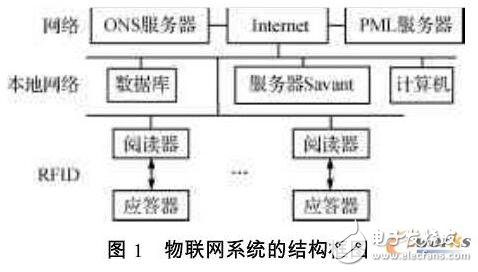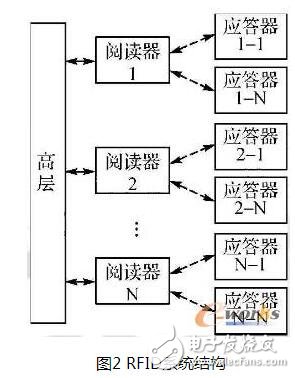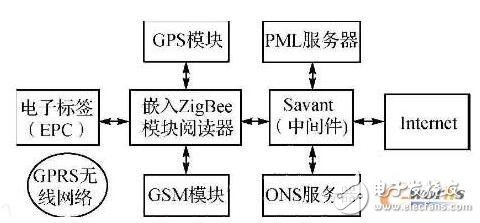Abstract: After deeply understanding the RFID principle of the key technology of the Internet of Things, it is proposed to integrate ZigBee technology and GPS technology into RFID technology to form a multi-point automatic identification based on ZigBee, GPS, intelligent wireless networking and real-time positioning RFID identification system. Internet of Things development platform. In this platform, the principle and application of each module such as RFID and ZigBee are introduced in detail. At the same time, the collision problem that readers are easy to read when reading EPC electronic tag data is solved, and the main advantages of the Internet of Things development platform are expounded. With the rapid development of wireless communication technology, sensor technology and information processing technology, the process of economic globalization, industrial automation and information technology is deepening, the Internet of Things technology is gradually maturing, and the field of application is gradually increasing. The Internet of Things technology has caused people to come. The more attention you attach. The Internet of Things, as the name implies, is a network formed by the connection of objects and objects. Information exchange and communication between them is used to realize a network for intelligently identifying, locating, tracking, monitoring and managing objects. On the one hand, the Internet of Things can improve economic efficiency and save costs; on the other hand, it can provide technical impetus for the recovery of the global economy. The Internet of Things is mainly used in logistics management, intelligent transportation systems, supply chain management, and monitoring in factories, buildings, and environmental protection. It can reduce management costs, improve management effectiveness, and ensure the safety of equipment and dangerous places. This article details the basic principles and components of the Internet of Things, describes the basic principles and functions of each module, and embeds the ZigBee module in the RFID system, which improves the wireless communication and networking capabilities of the Internet of Things, and makes the Internet of Things technology better. The development and application of the Internet of Things development platform and the application development prospects. The construction of the Internet of Things development platform is also of great significance for promoting the transformation of research results and the connection of production, education and research. "provides a simple and feasible way. 1 The basic principles of the Internet of Things The Internet of Things generally consists of three major components, namely the RFID RFID system, the middleware Savant system and the Internet system. The RFID system includes at least a reader (Reader) and an RFID tag (Tag), which has the advantages of fast reading speed, large storage space, long working distance, strong penetrability, strong working environment, and reusability. An RFID tag consists of a chip and an antenna, each tag having a unique electronic code that is attached to the object to represent the target object. The basic composition of the Internet of Things system is shown in Figure 1. 2 RFID system The core of IoT technology is Radio Frequency Identification (RFID). The general RFID system consists of readers, transponders (electronic tags EPC) and high-level components. It has fast reading speed, large storage space, long working distance, strong penetrability, strong working environment, and reusability. Advantages. An electronic tag consists of a chip and an antenna. Each tag has a unique electronic code that is attached to the object to represent the target object. The main task of the RFID reader is to control the radio frequency module to transmit a read signal to the tag, and receive the tag response, process the tag identification information, and then the reader transmits the received data integration process to the computer. The high-level is the information management system and decision-making system, which provides the basis for correct decision-making through the processing, analysis and mining of data. RFID in ticketing system (city bus, highway toll, tickets, etc.), toll card, urban traffic management, security access control, logistics, housekeeping, food safety traceability, drugs, mine production safety, anti-theft, anti-counterfeiting, documents, container identification, Animal tracking, motion timing, production automation, commercial supply chain and many other fields have received extensive attention and application. The structure of the RFID system is shown in Figure 2. 3 ZigBee module ZigBee is a short-range, low-complexity, low-power, low-data-rate, low-cost two-way wireless communication technology or wireless network technology. It is a set of networking, security and development based on the IEEE 802.15.4 wireless standard. Communication technology in application software. There are three main topologies for ZigBee networks: star, tree, and mesh networks. It adopts DSSS spread spectrum technology, the frequency band used is 2.45 GHz ultra-high frequency band, strong anti-interference ability, fast transmission speed, and can improve the working distance of the reader, mainly suitable for automatic control, wireless sensor, monitoring and remote control, etc. The domain can be embedded in a variety of devices and also supports geolocation. This article embeds the ZigBee module into the RFID system with more reliable security and better networking characteristics. 4 GPS and GPRS modules The Global Positioning System (GPS) is a global positioning system based on airborne satellites for high-precision radio navigation that provides accurate geographic location, speed and precise time anywhere in the world and in near-Earth space. information. The GPS system consists of three parts: the space part, the ground control part, and the user equipment part. GPRS is the abbreviation of General Packet Radio Service (General PACket Radio Service). It is a packet-switched data bearer and transmission method developed on the basis of GSM. It only adds corresponding functional entities and performs existing base station systems. Partial transformation to achieve packet switching, but the user data rate is much faster than the GSM network. The GPRS module uses the mobile phone module and the SIM card to send a short message to the data that the GPS locates, and informs the location of the other party's item. 5 Internet of Things Development Platform The system structure diagram of the Internet of Things development platform is shown in Figure 3. Figure 3 System structure diagram of the Internet of Things development platform The reader transmits a certain frequency of the radio frequency signal through the antenna. When the EPC electronic tag enters the reading range of the reader, the electronic tag is activated by extracting the energy required for the work from the RF energy emitted by the reader, thereby enabling the EPC electronic tag to obtain energy. It is activated and sends EPC information such as its own code to the reader. After receiving the carrier information from the electronic tag and demodulating and decoding the received signal, the reader sends the information to the middleware Savant system software in the computer for processing. The RFID data exchange and system management software mainly includes a middleware Savant system between the reader and the factory computer application system. In addition, if you want to know the location of an item in the entire IoT development platform system, you only need to send the inquiry signal through the GPRS wireless network. After receiving the inquiry information, each sub-module reads its own RFID information through the RFID reader. Compare with the code passed by the center to see if you are asking yourself. Then, the geographical location information is read from the GPS system, and the location signal is transmitted to the control center through the GPRS network, thereby grasping the location of the item. In addition, you must pay attention to anti-collision technology in this development platform. When two or more EPC electronic tags enter the reader's read range, they all receive the reader's query command, and they will send the response at the same time, which causes a signal conflict between the readers, making the reader unable to detect. When the correct signal is reached, a collision occurs. Therefore, an anti-collision protocol must be established between the reader and the electronic tag so that the reader detects an EPC electronic tag. There are two methods for preventing collisions: data inspection (error detection) and anti-collision algorithm. Here, error detection technology is adopted, which adopts multi-access technology to enable complete transmission and identification of data between the reader and the electronic tag in the RFID system. 6 Advantages of the Internet of Things Development Platform The Internet of Things development platform uses advanced RFID technology, ZigBee technology, GPS technology, and GPRS technology to integrate them to give full play to their respective advantages and improve system performance. Its main advantage lies in the embedded ZigBee technology in RFID technology, which makes the reader's reading range wider, the reading speed is faster, the delay is smaller, and the cost is lower, so that multiple RFID readers can be wirelessly connected or networked. Other instruments are more convenient, and devices and different protocol readers are connected to each other to realize multi-point wireless acquisition and transmission of data. Finally, an RFID recognition system based on ZigBee technology for multi-point automatic identification and intelligent wireless networking is formed. In addition, the integration of GPS and GPRS technology makes the Internet of Things development platform system communication more convenient, and provides a new way for the better promotion and use of Internet of Things technology. Conclusion Based on the existing situation of IoT system and in-depth analysis of technical problems, this paper integrates technologies such as RFID, ZigBee, GPS and GPRS into the Internet of Things development platform to construct a set of Internet of Things based on ZigBee technology. The platform system is developed to improve the reader's reading ability, anti-collision capability and networking capability. However, there are still many problems in the practical application of the Internet of Things, such as technical standards, security and remote identification, and anti-interference ability. Wait. With the continuous development and updating of technologies such as RFID, ZigBee, GPS, GPRS, etc., their advantages in the Internet of Things will be more prominent and will better improve our lives.
Genki Ippai 1.0 uses high-tech temperature control, food grade pod and high-quality material device. We also upgrade to type-C interface for charging faster. We have developed various flavors for Genki Ippai Pod Systems. Up to 11 flavors provide consumers with more choices. What's more, you can use other brand`s vape pen with our vape pod.
We offer low price, high quality Disposable E-Cigarette Vape Pen,Electronic Cigarettes Empty Vape Pen, E-cigarette Cartridge,Disposable Vape,E-cigarette Accessories,Disposable Vape Pen,Disposable Pod device,Vape Pods to all over the world.
GenkiIppai Pods 1.0,Pod Systems Vape And Smoke,Vape Pod System Device,Pod System Vape Kit,Pod System Mini Vape Pod ZGAR INTERNATIONAL(HK)CO., LIMITED , https://www.zgarpods.com

